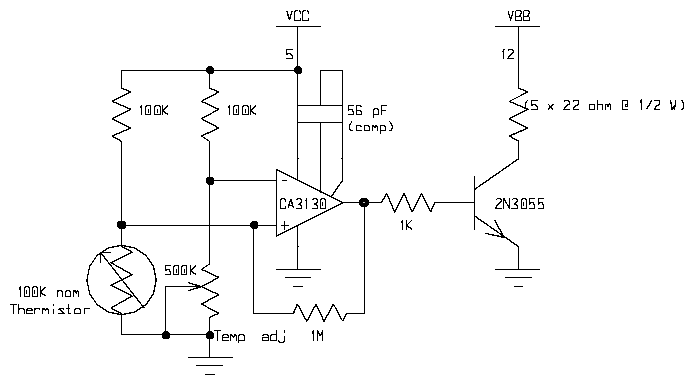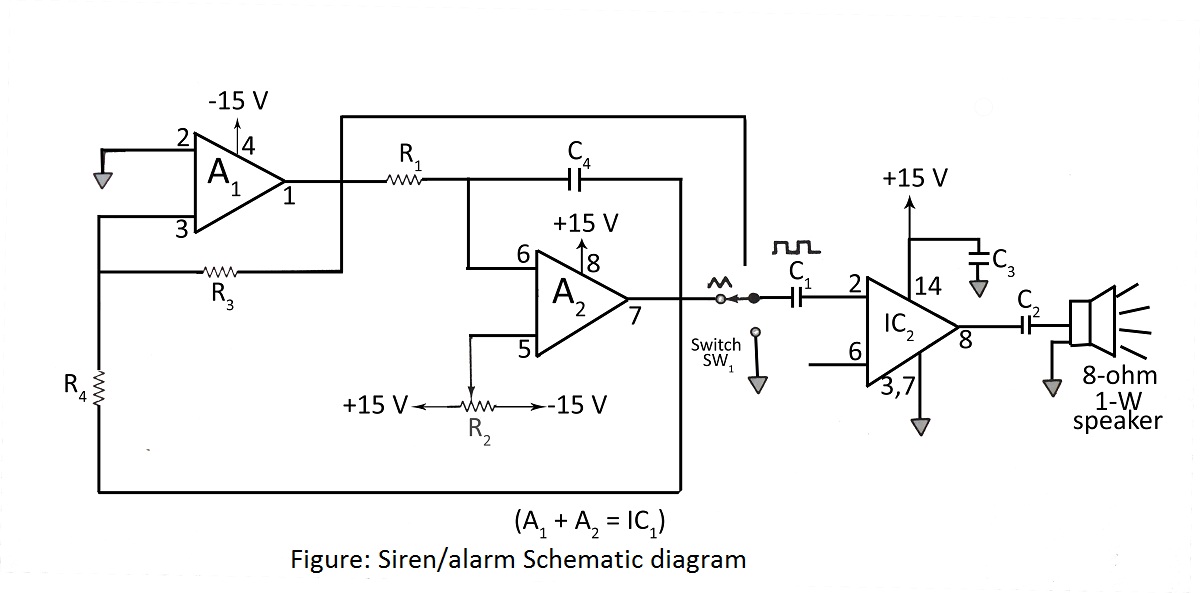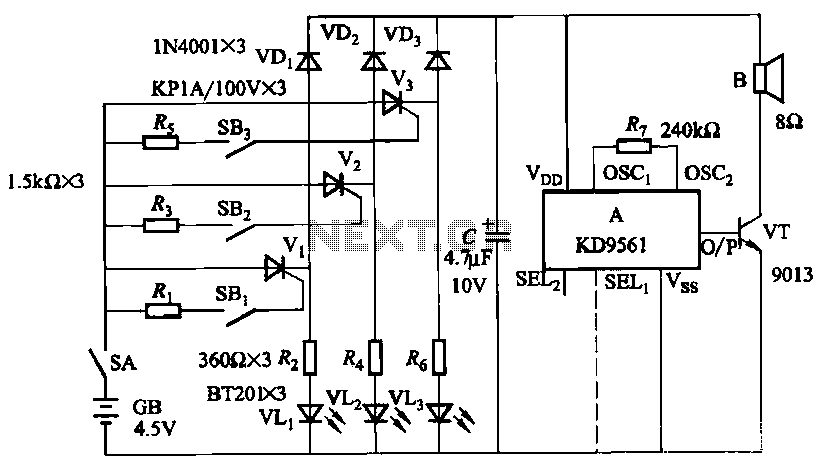
Alarm Circuits

High Power Siren Circuit. This article discusses a robust siren circuit suitable for various applications. A complementary transistor pair (BC557 & BC337) is configured as an oscillator to directly drive the speaker. Transistor Q1 (BC557) is utilized to ensure complete charging of capacitor C2. When switch P1 is activated, capacitor C2 discharges through resistor R8, initiating oscillation at a low frequency that gradually increases until a steady high-frequency tone is achieved. The oscillation is maintained until switch P2 is released, at which point C2 begins to discharge, causing the output frequency to decrease gradually. The circuit ceases oscillation once C2 is fully charged.
The high power siren circuit operates using a complementary push-pull configuration, which enhances efficiency and sound output. The BC557 transistor serves as the PNP component of the pair, while the BC337 functions as the NPN transistor. This arrangement allows for effective switching and amplification of the audio signal generated during oscillation.
Capacitor C2 plays a crucial role in the timing and frequency modulation of the circuit. Its charging and discharging characteristics directly influence the oscillation frequency. Resistor R8 is selected to control the discharge rate of C2, thereby affecting how quickly the circuit transitions from a low frequency to a high frequency and vice versa.
The circuit's functionality can be further refined by adjusting the values of the resistors and capacitors involved. This allows for customization of the siren's sound characteristics to suit specific requirements. Additionally, the use of a potentiometer in place of R8 can provide variable control over the discharge rate, enabling the user to fine-tune the frequency response dynamically.
Overall, this high power siren circuit is versatile and can be adapted for various applications, including alarms, warning signals, or other audio signaling needs. Properly designed, it can deliver a powerful and effective sound output suitable for demanding environments.High Power Siren Circuit This article is all about a comparatively strong siren circuit useful for any purpose. A complementary transistor pair (BC 557 & 337) is arranged as an oscillator, directly drives the speaker.
Transistor Q1(BC 557) is used to provide full charging of capacitor C2. When P1 is pressed, C2 discharges through R8 and the circuit starts oscillating at a low frequency that increases slowly until a high frequency steady tone is reached and it is kept. When P2 is released C2 starts discharging and and output frequency slowly decreases. When C2 is charged fully the circuit stops oscillations. Tips. Adjust the 🔗 External reference
The high power siren circuit operates using a complementary push-pull configuration, which enhances efficiency and sound output. The BC557 transistor serves as the PNP component of the pair, while the BC337 functions as the NPN transistor. This arrangement allows for effective switching and amplification of the audio signal generated during oscillation.
Capacitor C2 plays a crucial role in the timing and frequency modulation of the circuit. Its charging and discharging characteristics directly influence the oscillation frequency. Resistor R8 is selected to control the discharge rate of C2, thereby affecting how quickly the circuit transitions from a low frequency to a high frequency and vice versa.
The circuit's functionality can be further refined by adjusting the values of the resistors and capacitors involved. This allows for customization of the siren's sound characteristics to suit specific requirements. Additionally, the use of a potentiometer in place of R8 can provide variable control over the discharge rate, enabling the user to fine-tune the frequency response dynamically.
Overall, this high power siren circuit is versatile and can be adapted for various applications, including alarms, warning signals, or other audio signaling needs. Properly designed, it can deliver a powerful and effective sound output suitable for demanding environments.High Power Siren Circuit This article is all about a comparatively strong siren circuit useful for any purpose. A complementary transistor pair (BC 557 & 337) is arranged as an oscillator, directly drives the speaker.
Transistor Q1(BC 557) is used to provide full charging of capacitor C2. When P1 is pressed, C2 discharges through R8 and the circuit starts oscillating at a low frequency that increases slowly until a high frequency steady tone is reached and it is kept. When P2 is released C2 starts discharging and and output frequency slowly decreases. When C2 is charged fully the circuit stops oscillations. Tips. Adjust the 🔗 External reference





